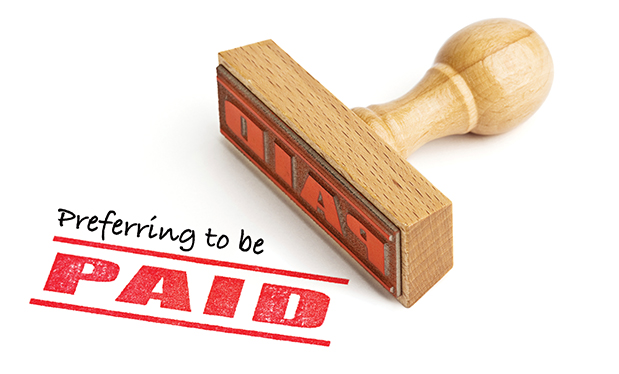As you know, a large portion of roofing work involves transporting equipment and materials to job sites, and doing so usually involves trucking operations. The Department of Transportation's (DOT's) rules regarding qualifications of drivers, operation and marking of trucks carrying loads, registration of the company using the trucks and a host of other compliance requirements usually come into play during your trucking operations.
From an Occupational Safety and Health Administration (OSHA) perspective, when your employees handle certain materials, such as those that qualify as hazardous materials under OSHA regulations, to, from and on a job site, you must comply with OSHA's unique requirements, including training obligations, so you maintain a safe and healthy work environment. And you also must follow DOT's provisions related to truck operations with which your company must comply. DOT's key requirements are as follows.
USDOT Numbers
Companies operating certain trucks in interstate commerce come under the jurisdiction of DOT's Federal Motor Carrier Safety Administration (FMCSA). The first step when evaluating your company's interaction with FMCSA is to determine whether you are required to register for a USDOT Number. USDOT Numbers are used by DOT to monitor a company's or independent owner's or operator's safety management practices and controls. You must obtain a USDOT Number if you have a vehicle that operates in interstate commerce and the vehicle meets one of the following requirements:
- The vehicle has a gross vehicle weight rating or gross combination weight rating, or gross vehicle weight or gross combination weight, of 10,001 pounds or more.
- The vehicle is designed or used to transport, for compensation, more than eight passengers, including the driver.
- The vehicle is designed or used to transport more than 15 passengers, including the driver, and is not used to transport passengers for compensation.
- The vehicle is used to transport hazardous material in a quantity requiring placarding.
Interstate commerce is defined as trade, traffic or transportation between a place in a state and a place outside of that state, including a place outside the U.S.; between two places in a state, through another state or a place outside the U.S.; or between two places in a state as part of trade, traffic or transportation originating or terminating outside the state or the U.S.
To apply for a USDOT Number, you must complete form MCS-150, Motor Carrier Identification Report, online at fmcsa.dot.gov/online-registration.
CDLs
Individual states evaluate the knowledge and skill requirements for a driver to obtain a commercial driver's license (CDL) to drive a commercial motor vehicle. However, FMCSA has developed and published standards that states must follow during the evaluation and licensing process.
Under FMCSA rules, CDLs fall under A, B or C classification depending on the nature of the vehicle; whether it is towing another vehicle; and the nature of material being carried (such as a hazardous material) or the quantity of passengers it is designed to carry. Generally, a CDL is required and classified under the following:
- Class A for a combination of vehicles with a gross combination weight or weight rating of 26,001 pounds or greater provided the towed vehicle has a gross vehicle weight or weight rating of more than 10,000 pounds
- Class B for a single vehicle with a gross vehicle weight or weight rating of 26,001 pounds or greater or any such vehicle towing a vehicle with a gross vehicle weight or weight rating of 10,000 pounds or less
- Class C for a single vehicle or a combination of vehicles that do not meet the requirements in Classes A or B and designed to transport 16 or more passengers, including the driver, or used to transport hazardous materials in a quantity requiring placarding under the hazardous materials regulations (HMR)
FMCSA rules require special tests to obtain endorsements on a driver's CDL, such as driving a school bus or tanker vehicle or transporting placarded amounts of hazardous materials. In addition, federal rules also provide for restrictions that may be placed on a CDL, such as including the use of vehicles with automatic transmissions only, full air-brake vehicles and medical variances. States also may have additional restrictions.
CDL rules inadvertently can be violated by a seemingly innocuous task such as loading too large a quantity of flammable bonding adhesive (a Class 3 hazardous material) onto a pickup truck. Under HMR, if the quantity carried is 1,001 pounds or greater, the vehicle must be placarded, and because of this, the driver must possess a CDL with an H endorsement for hazardous material.
Hazardous material is a substance or material the secretary of transportation has determined capable of posing an unreasonable risk to health, safety and property when transported in commerce and is designated as hazardous under Section 5103 of federal hazardous materials transportation law (49 U.S.C. 5103). Generally, the term includes hazardous substances, hazardous wastes, marine pollutants, elevated temperature materials, materials designated as hazardous in the Hazardous Materials Table (see 49 CFR 172.101), and materials that meet the defining criteria for hazard classes and divisions.
For a roofing contractor, this ordinarily applies to flammable solvents (benzene, kerosene, paint thinner, lacquer thinner, naptha, acetone), flammable adhesives such as bonding adhesives, flammable coatings, cements or mastics, and/or solvent-containing asphalt products such as cutbacks. As always, the product label or safety data sheet (SDS) should contain this important information regarding the nature of the product and hazards.
SDSs
Somewhat allied but of a much broader scope are OSHA's revisions regarding hazard communication that became effective June 1. Under the new hazard communication rule, roofing contractors were required to train employees regarding new label requirements and a new SDS format by Dec. 1, 2013. As of June 2015, chemical manufacturers, importers, distributors and employers must have SDSs in the new 16-section format for products they manufacture, ship to customers and/or use on job sites.
Currently, contractors must ensure workers on job sites have the new 16-section SDS format for each hazardous chemical and SDSs for all such chemicals are readily accessible during a work shift. Training workers for awareness and understanding of the new SDS format has been an ongoing obligation for contractors since OSHA's original compliance date of Dec. 1, 2013.
Drug and alcohol testing
A critical component established under the CDL rules of FMCSA involves the testing of CDL drivers for drugs and alcohol. In fact, drug and alcohol testing applies across all DOT agencies to those in safety-sensitive transportation jobs. Drug and alcohol testing is performed under the following six testing categories:
- Pre-employment: Before operating a commercial motor vehicle, an employer must receive a negative drug test of the CDL holder.
- Post-accident: A drug test may be required depending on whether a citation was issued to the CDL holder and whether the accident involved a fatality, bodily injury or damage to a vehicle requiring it to be towed away.
- Random: Unannounced testing must be spread reasonably throughout the calendar year.
- Reasonable suspicion: CDL holders may be tested based on suspicion of driver impairment. Supervisors must have training regarding recognition of signs of impairment.
- Return-to-duty: A negative drug and alcohol test is required of drivers who previously tested positive, refused a test or otherwise violated the prohibitions under the rules and have completed the return-to-duty process.
- Follow-up: Six tests must be performed during 12 months by a substance abuse professional subsequent to a negative return-to-duty testing. The follow-up procedure can extend past the 12-month period.
Substances that must be tested for according to the drug and alcohol testing requirements for CDL holders include the following:
- Marijuana
- Cocaine
- Opiates (opium and codeine derivatives)
- Amphetamines and methamphetamines
- PCP (phencyclidine)
A driver who tests positive to a drug test or registers 0.04 or greater for blood-alcohol content must immediately be removed from performing "safety-sensitive functions," such as driving a commercial motor vehicle, until the driver successfully completes the return-to-duty process.
Be vigilant
FMCSA rules regarding operation of commercial motor vehicles and OSHA's rules related to hazard communication offer challenges and require your continued vigilance to maintain your company's compliance.
Your administrative oversight of company procedures to ensure adherence to OSHA's and DOT's specific regulatory requirements is critical.
Harry Dietz is NRCA's director of risk management.
Did you know?
NRCA has a host of regulatory compliance assistance programs to help roofing contractors. For more information, contact NRCA's Customer Service Department at (866) ASK-NRCA (275-6722) or info@nrca.net.



